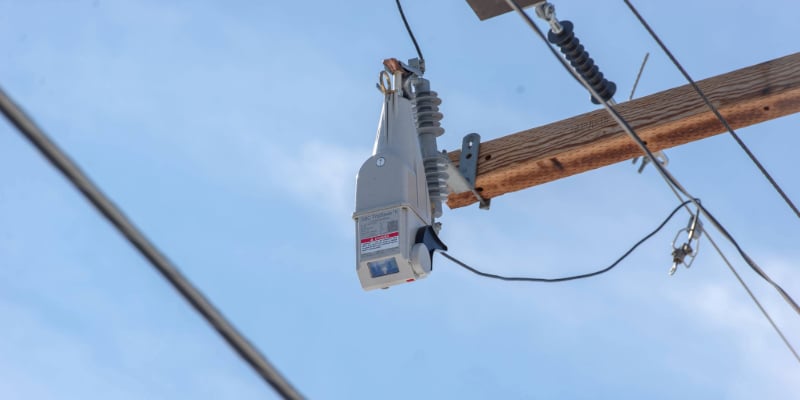2 for 1: How a Resilience Solution Can Also Boost Reliability
Back to Top
Remember when utilities’ primary focus was on providing safe, reliable, cost-effective power?
It wasn’t all that long ago.
But with the frequency of severe weather events recently, another expectation has quickly risen. Today, utilities are focusing on resilience.
A recent report shows U.S. utilities are actively planning to improve grid resilience for about 130 million people, or 39% of the nation’s population. This is a welcome—and necessary—new focus.
And yet ... we as an industry can’t leave behind our emphasis on blue-sky reliability. The best option is to pursue solutions that can tackle both resilience and reliability at the same time—solutions that can provide both utilities and other stakeholders with an almost unbelievable ROI.
To achieve this, utilities can follow these steps:
Step 1: Embrace the Resilience Mission
There are good reasons industry sentiment is shifting toward resilience:
That's the kind of BOGO deal that’s too good to pass up.

- A rapidly aging grid
- Worsening and more frequent storms
- Rising customer expectations
So, reliability goals remain. (Namely: Keep the power on constantly so critical infrastructure, businesses, and people’s lives can continue running.)
But resilience goals are becoming increasingly important. (Namely: Keep the power on even during massive storms—or at least restore it quickly.)
A subtle but distinct difference.
Step 2: Recognize That the Pursuit of Resilience Runs Through Reliability
We are in the thick of storm season, but grid-modernization goals remain the same, no matter the weather or time of year:
- Keep temporary issues from becoming sustained outages.
- Protect against widespread outages by isolating permanent faults.
- Deliver continuous power to homes, businesses, and critical infrastructure—no matter what.
This overlap in goals illustrates the reason to target resilience: If you pursue the goal of delivering resilience on black-sky days, your path will take you right through delivering reliability on blue-sky days, as well.
Like a two-for-one deal.
Step 3: Find the Most ROI-Ready Spot on Your Grid
While a resilient, outage-free grid may seem like a lofty goal, you can start by targeting specific areas of the grid that provide:
- Maximum outages avoided
- Immediate results
- Provable and quantifiable improvement
- High ROI
Considering all this, your overhead lateral lines are the best areas to begin. The reasons:
- You have many miles of lateral lines—and some that are very long. The average distribution circuit has 21 laterals—many more lines comprising many more miles than feeder lines. And if one these lines experiences an issue, it can be a (sometimes very) long drive to fix it.
- Overhead laterals are the most exposed part of your grid. Nestled in neighborhoods or stretched across rural landscapes, these lines are highly vulnerable to wildlife and foliage.
- Lateral lines’ vulnerability leads to a lot of outages. Put simply, the quantity and length of lateral lines plus their vulnerability can add up to a drastic change in your metrics.
- Most disturbances here are temporary. In fact, 80% or more outage-driving disturbances on overhead lateral lines are temporary.
- So, you have a big opportunity to post big outage-avoidance numbers. A resilience-plus-reliability solution on a lateral line can prevent these 80% of temporary disturbances from creating permanent outages.
- And those big numbers show up right away. Two trends make this immediate impact important: worsening storms and shifting priorities. With these storms come more frequent lateral disturbances—which means more numerous and more frequent chances for device ROI. And with the industry’s shift toward resilience, avoiding outages from storms garners a lot of positive attention.
Step 4: Identify 1 Solution That Addresses These 2 Challenges
S&C’s TripSaver® II Cutout-Mounted Recloser delivers the two-for-one benefits overhead lateral lines so desperately need right now.
- Its automated reclosing capabilities prevent temporary faults from causing permanent outages.
-
- Good for resilience against storm-swept branches that briefly touch a line.
-
- Good for reliability amidst sunny-day critters that choose the wrong place to scamper.
- It protects against widespread outages by isolating permanent faults to only the affected grid section.
-
- Good for resilience against blizzard-battered limbs that fall on the line.
-
- Good for reliability amidst anything-can-happen summer days, like car accidents or construction mishaps that can disable line sections.
When you boldly pursue resilience, you achieve reliability as you go. In a sense, a lateral recloser like the TripSaver II recloser is like a buy-one-get-one deal—one that provides tangible, immediate benefits to the most vulnerable part of your grid. That’s the kind of BOGO deal that’s too good to pass up.